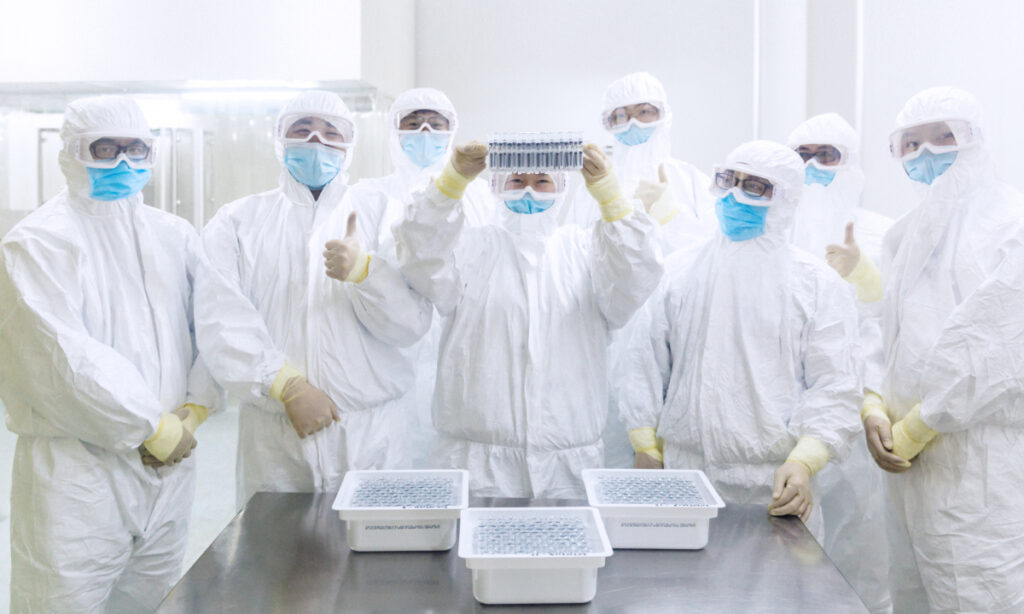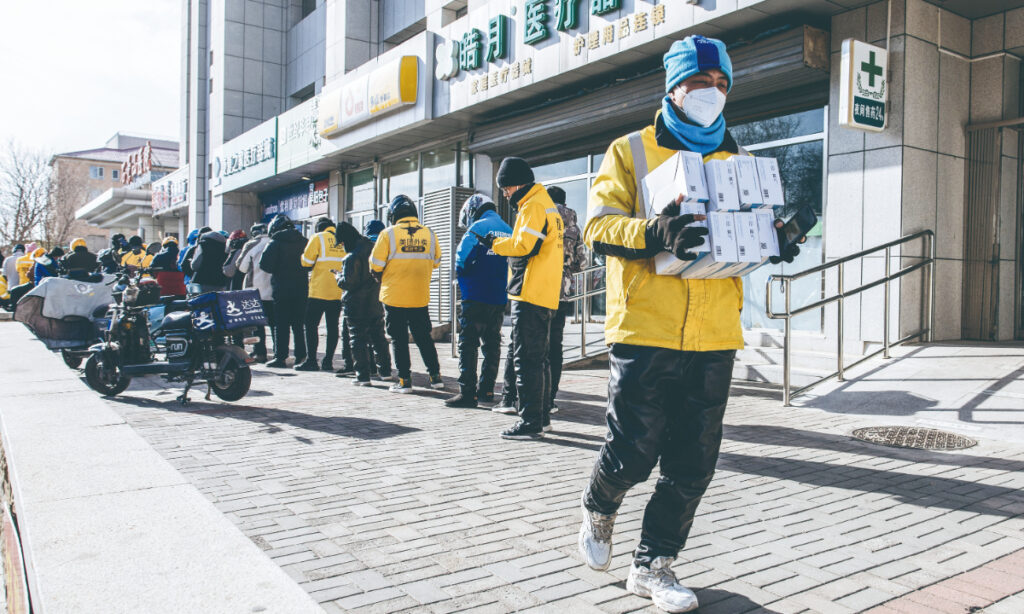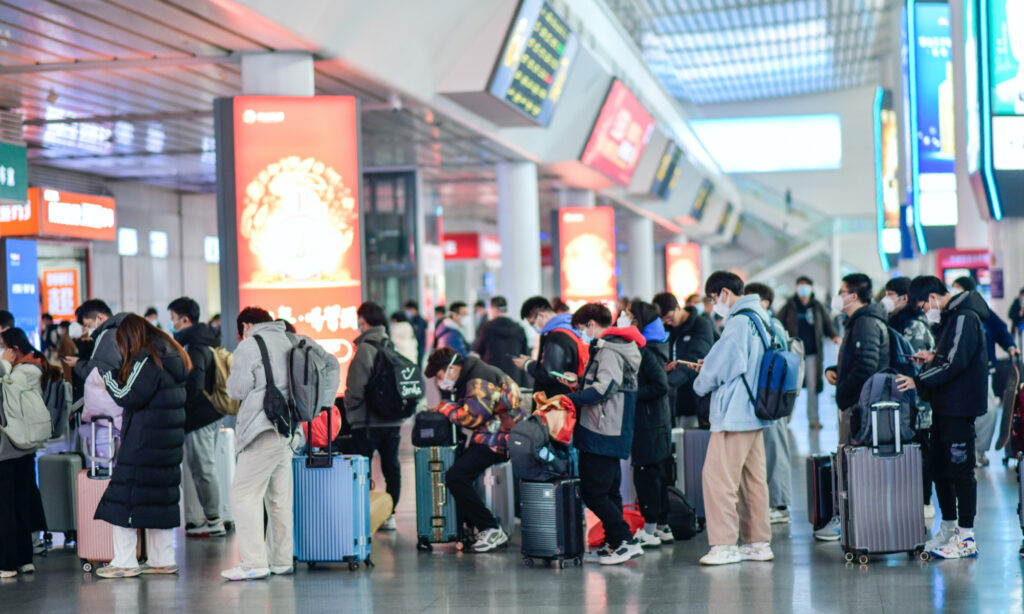

After China released 10 new measures aimed at further optimizing its COVID-19 response, top Chinese epidemiologists predicted this wave of infection will peak within a month. To cope with the possible surging number of caseloads, hospitals nationwide have upped the preparation of ICU beds and medical workers, as well as restructuring hospitals to make sure patients in need get timely treatment, as well as preventing the medical system from being overloaded.
Shoring up medical preparation, as well as ramping up vaccination and helping people form the right understanding of the nature of Omicron are some of the measures in the government’s carefully arranged plan of gradually relaxing the COVID-19 restrictions, so it can weather the surging cases during exit in a relatively orderly manner compared to the West, epidemiologists said, brushing aside the Western media’s hype over China’s optimized COVID-19 response.
The official COVID-19 caseload in China has been decreasing for days since the end of last month, with 2,270 confirmed cases and 8,327 asymptomatic cases recorded on Saturday. The drop was propelled after China on December 7 further adjusted its COVID response by releasing 10 new measures, including allowing some asymptomatic carriers and mild COVID-19 patients to quarantine at home, and scrapping negative nucleic acid result and health code requirements for entering most public places.
Yet the number of outpatients displaying symptoms including fever has increased in hospitals nationwide. Long lines were observed in some hospitals in Beijing over the past few days, media reported on Saturday, noting that more than 100 people were lining up waiting to be treated at one fever clinic at a hospital. Some patients told media that they visited doctor to get medicine for fever as many drug stores have sold out related medicine.
The National Health Commission (NHC) also said on Friday that all hospitals should receive patients with positive COVID-19 test results, instead of instructing patients to attend designated hospitals.
A doctor who works in a respiratory department at a hospital in Beijing, who requested anonymity, told the Global Times on Sunday that the biggest problems they are facing now is the increasing number of patients waiting to be admitted into emergency and fever clinics. The doctor said his hospital had separated patients with positive COVID-19 testing result and patients with negative result, to reduce the risk of infection spreading within the hospital.
Beijing government has encouraged COVID-19 patients with mild or no symptoms to self-quarantine at home, to conserve medical resources for those who really need them. Several COVID-19 patients with mild symptoms reached by the Global Times said they prefer to take some medicines and rest at home, as “going to the hospital is time consuming and increases the risk of infection,” said Nancy Xu, a Chaoyang resident.
More people in Beijing are coming to realize the importance of conserving precious medical resources. The usually busy National Center for Children’s Health in Beijing witnessed less visitors on Sunday, the Global Times reporter noticed. Only about 20 people were lining up for the fever clinic on Sunday morning. One parent told the Global Times that she was terrified of the virus at the beginning, but no longer felt so after saw children she knows only got mild symptoms. The mother chose not to go to hospitals easily as they are already overcrowded.
Fan Qing, an official from Beijing’s Shijitan Hospital predicted to media that the capital will see COVID-19 ballooning fast in the coming one or two weeks, but this will probably be the most severe situation the city will face.
Chen Xiaoyou, an official from Beijing’s Ditan Hospital, a hospital designated to treat COVID-19 patients with severe cases, also told media that currently the overwhelming of medical system can be avoided after this short period of “difficulty,” when the caseload is surging. Later, after people form a better understanding of COVID, people with no or mild symptoms will choose home quarantine, or to go to makeshift hospitals if they suffer severe symptoms, instead of everyone rushing to designated hospitals once infected, Chen said.
The latest wave of COVID-19 infections in Guangzhou is likely to peak between early- to mid-January and mid-February in 2023, and society will return to pre-epidemic conditions in the first half of 2023, China’s top respiratory disease expert Zhong Nanshan said on Friday. Guangzhou is among the early Chinese cities that adopted relaxed COVID-19 restrictions.
Nationwide, the outbreak will also peak within one month, and it will take three to six months for China to weather this wave of outbreak, Caixin on Sunday quoted Zhang Wenhong, head of the infectious disease department at Huashan Hospital in Shanghai, also director of the National Center for Infectious Diseases, as saying.
Zhang warned that medical workers should be prepared to be infected during this time, but also try to avoid being infected simultenously, in case the medical system is overwhelmed.
Hospitals nationwide are striving to shore up their preparedness for possible exit waves. An official from NHC said that hospitals have moved quickly in recent days to increase ICU beds, more than doubling its intensive care bed capacity to 10 beds per 100,000 people, up from less than four just a month ago.
Officials from the NHC also said on Friday that the country could redirect 106,000 doctors and 177,700 nurses to intensive care units.
The NHC notice published on Sunday said that top hospitals in each province should help those in the province’s rural areas improve rural areas’ ability to cope with the surge in COVID-19 cases. The measures include sending medical workers to rural hospitals, and setting up remote networking to assist doctors in counties and villages.
Rural areas should staff one doctor and 2.5 to 3 nurses per ICU bed, and add 20 or 30 percent of total medical workers as back-up resources. It also asked 90 percent of village and township hospitals to establish fever clinics by the end of March, 2023.

Smear dismissed
Ever since China further adjusted its COVID-19 responses, Western media started another round of smearing, claiming that China’s relaxation of COVID-19 strictions was abrupt, that it “didn’t prepare sufficiently,” and would come with millions of deaths.
Yet Wang Guangfa, a respiratory disease expert from Peking University First Hospital, told the Global Times that China has been tweaking and improving its COVID-19 response for the past few years and striving to seek a balance between virus control and guaranteeing normal life. “Relaxing now is not abrupt. Those media failed to notice our gradual changes and that our policies changed when the pathogenicity of the virus decreased geometrically.”
Wang said that relaxation does not equal to lying flat, as the government now shifted its focus on medical resources, which aims not to let the peak number overwhelm the medical system when the exit wave emerges. Such strategy, and the fact that China waited until Omicron had become far less lethal, guarantees that China will exit from the pandemic in a more orderly fashion than what happened in the West, Wang said.
The NHC has instructed local governments to strengthen construction of medical resources, including improvements to fever clinics, more medical resources in designated hospitals, upgrading makeshift hospitals according to the size of the city’s population and expansion of resources for treatment of critical cases.
Local governments are also ramping up vaccination, especially for vulnerable groups. Beijing on Sunday rolled out measures for boosting vaccination among the elderly, such as adding vaccination venues in nursing homes, at Senior Citizens’ University locations and other central locations. The city also shortened the interval between first and second shots, and the second and third shots.
Responding to the hypothesis that tens of thousands of people could die in the Chinese mainland, in reference to death rate of Hong Kong’s deadly fifth COVID-19 wave, Zhong, the renewed epidemiologist, brushed aside the scenario. He said that when the wave hit Hong Kong, less than 20 percent of those aged above 60 in the city was fully vaccinated. Yet 68.86 percent of the age group in the mainland had received booster shot as of December 8. “It is far from enough, but it is surely better than Hong Kong back then,” said Zhong.
ARTICLE FROM: Global Times

